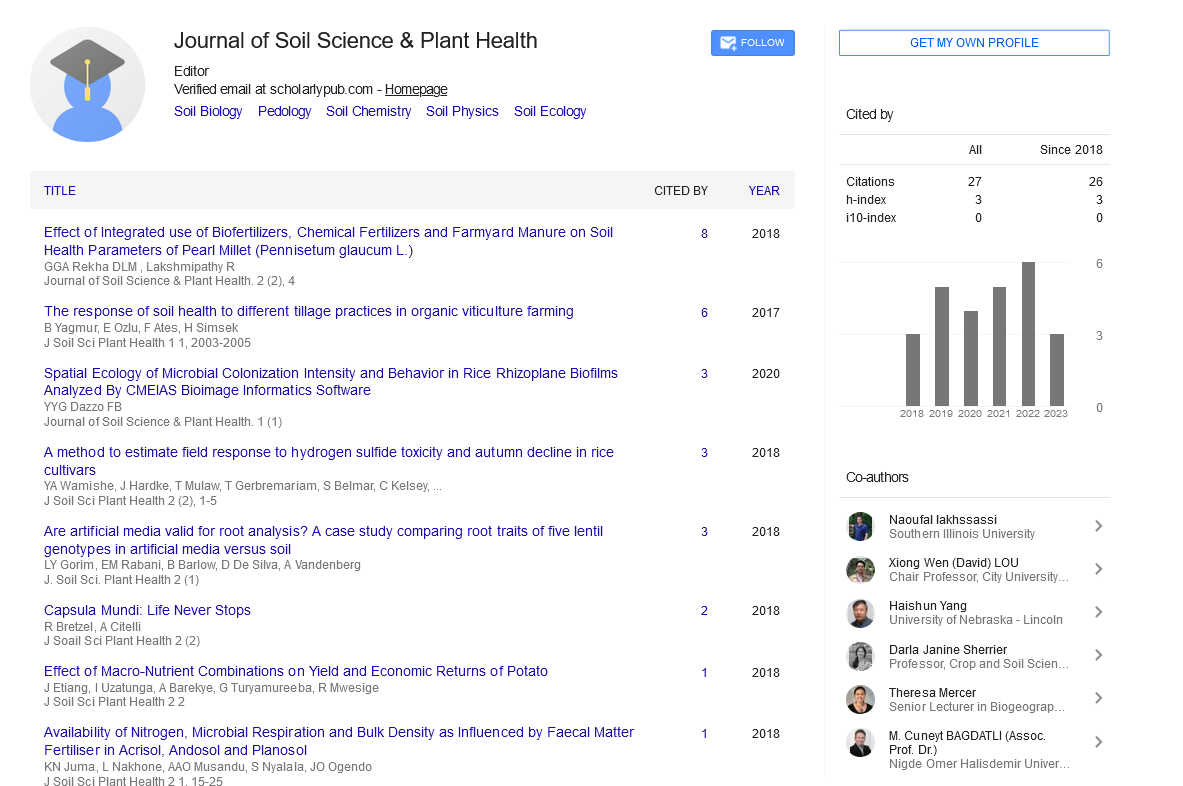Perspective, Vol: 7 Issue: 1
Basic Principal of Earth Science, Soil Genesis and its Soil Classification
Ganiyu Omotola*
1Department of Geoscience and Petroleum, Norwegian University of Science and Technology, Trondheim, Norway
*Corresponding Author: Ganiyu Omotola
Department Of Geoscience and
Petroleum, Norwegian University Of Science And Technology, Trondheim, Norway
E-mail: Ganiyu@Oouagoiwoye.Edu.Ng
Received date: 27 January, 2023, Manuscript No. JSPH-23-92779;
Editor assigned date: 30 January, 2023; PreQC No. JSPH-23-92779 (PQ);
Reviewed date: 13 February, 2023; QC No. JSPH-23-92779;
Revised date: 20 February, 2023; Manuscript No. JSPH-23-92779 (R);
Published date: 27 February, 2023, DOI:10.4172/jsph.10000171
Citation: Omotola G (2023) Basic Principal of Earth Science, Soil Genesis and its Soil Classification. J Soil Sci Plant Nutr 7:1.
Abstract
The principal or fundamental concept of Earth Science is that it is the study of the Earth and its processes. Earth Science encompasses many different fields of study, including geology, oceanography, meteorology, and astronomy
Description
The principal or fundamental concept of Earth Science is that it is the study of the Earth and its processes. Earth Science encompasses many different fields of study, including geology, oceanography, meteorology, and astronomy.
Geology is the study of the Earth's physical structure, including its rocks, minerals, and landforms. Oceanography is the study of the oceans and their physical and biological processes. Meteorology is the study of the Earth's atmosphere, including weather and climate patterns. Astronomy is the study of the universe beyond Earth. The principal of Earth Science is that it seeks to understand the natural processes that shape the Earth and how they interact with each other. This includes studying the physical, chemical, and biological processes that govern the Earth's systems and the interactions between them. Through the study of Earth Science, scientists can gain a better understanding of the natural world and the complex interactions that occur within it. This knowledge can be used to help us better understand and manage natural resources, predict and mitigate natural disasters, and address global environmental issues.
The fundamental concept of soil genesis is that soil formation is a dynamic and continuous process that is influenced by a range of physical, chemical, and biological factors over time.
Soil genesis is the study of how soils are formed and how they change over time. The formation of soil is a complex process that involves the interaction of various factors, including climate, topography, parent material, biota, and time. The principal of soil genesis is based on the understanding that soil formation is a function of these factors and that the resulting soil properties are a reflection of these interactions. For example, soil texture and structure are influenced by the physical and chemical weathering of parent material, as well as by the influence of biological factors such as plant roots and microorganisms. The principle of soil genesis is also based on the understanding that different soils have different properties and characteristics, depending on the factors that influenced their formation. This means that soils can vary greatly in terms of their fertility, water-holding capacity, and ability to support plant growth. The study of soil genesis is important because it helps us to understand how soils form and how they can be managed and used sustainably. By understanding the processes that influence soil formation, we can better manage our land resources and protect our soil from degradation and erosion. This knowledge can be used to support sustainable agriculture and forestry practices, as well as to manage and protect natural ecosystems.
Soil classification is the process of grouping soils based on their physical, chemical, and mineralogical properties. The basic principle of soil classification is to identify the characteristics of the soil, such as texture, structure, color, and mineralogy, and use these characteristics to assign the soil to a particular classification system. There are several soil classification systems in use today, each with its own set of criteria and categories. The most widely used soil classification system is the Soil Taxonomy, developed by the United States Department of Agriculture (USDA). The Soil Taxonomy system is based on a hierarchical system of categories that groups soils based on their physical, chemical, and biological properties. The basic principle of the Soil Taxonomy system is to classify soils based on their horizons, which are layers of soil that have distinct characteristics. Soils are classified based on their topsoil horizon (A horizon), subsoil horizon (B horizon), and underlying horizon (C horizon). The Soil Taxonomy system also takes into account other soil properties, such as color, texture, structure, pH, and mineralogy, to further refine soil classification. Overall, the basic principle of soil classification is to group soils based on their physical, chemical, and mineralogical properties, which allows for a better understanding of soil characteristics and their potential uses.
 Spanish
Spanish  Chinese
Chinese  Russian
Russian  German
German  French
French  Japanese
Japanese  Portuguese
Portuguese  Hindi
Hindi 